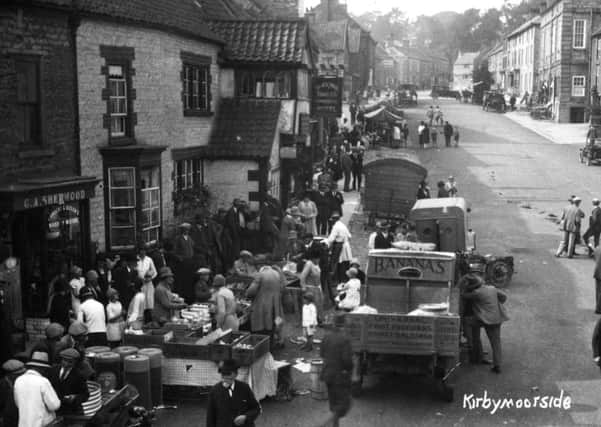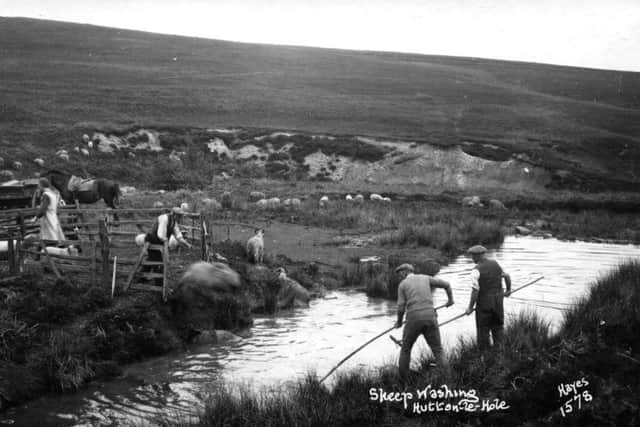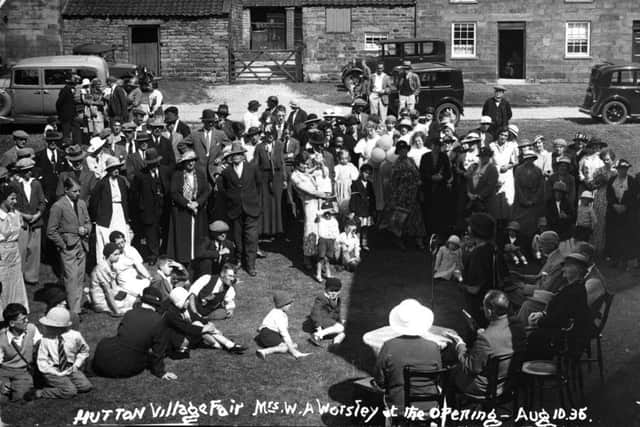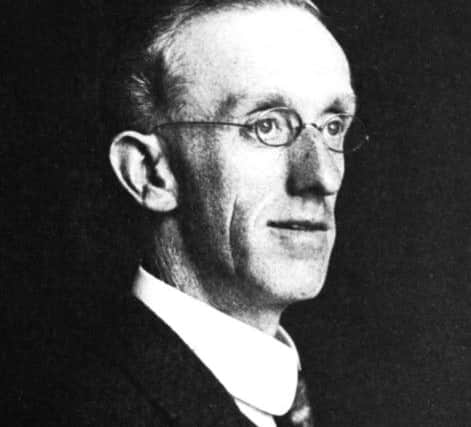A photographic chronicle of Yorkshire


Thereafter, photography developed slowly. Around 1839 French artist and physicist Louis-Jacques-Mandé Daguerre introduced the ‘Daguerreotype’. These were made on copper plates – without a negative. But, there was a drawback – Daguerrotypes required long exposures with sitters having to remain perfectly still – their head sometimes held rigidly – and with their eyes closed. Then, a photographer would scratch the sitter’s eyes on to the photographic plate.
Further strides were taken by William Henry Fox Talbot, a man knowledgeable on a wide range of subjects including chemistry, astronomy art history and mathematics. He used this expertise to develop the Calotype – a paper negative from which any number of prints could be made.
Advertisement
Hide AdAdvertisement
Hide AdBefore the mid 19th century, only the upper classes could afford to commission a portrait artist. Thus, photographers were in great demand, using both the Daguerrotype and Calotype methods, but these were very time consuming and led to the invention of the glass plate negative, or the albumen process.


With this development, photography reached a plateau and there it remained for a while. Glass plate negatives produced photographs with a hitherto unseen brilliance and clarity. They also gave rise to Cartes de Visite, which were small albumen prints mounted on cards that found popularity amongst countless people around the world.
In the latter half of the 19th century, photography was treated with suspicion. Numerous artists using the traditional materials argued that photography was merely the mechanical reproduction of an image and also questioned whether photographers’ works met the definitions and purposes of art.
But many late 19th century photographers, particularly in Yorkshire, embraced it as a means of making a living,.
Advertisement
Hide AdAdvertisement
Hide AdOne of them was William Hayes, whose surviving letters, day-books, diaries, glass plate negatives and even studio (reconstructed in the Ryedale Folk museum) provide a marvellous insight into his output.


Born on October 16 1871, in Newbiggin, York, Hayes was the son of a boot and shoemaker. Hayes attended York Art school.
After his father’s sudden death in 1896, Hayes took over the family shoe business for around 15 months, and then became a designer at Rowntree’s Cocoa Works. There, his interest in photography grew until he became a photographic assistant at George Henry Thwaites’ firm in High Petergate, York.
Early in 1899, Hayes bought a Kodak Bullet camera and photographed many subjects. Recognising his talent, George Thwaites gave him more responsibilities, covering prestigious assignments, taking group pictures and views and undertaking studio portrait work. For much of the work he used a large plate camera and after flirting with hand tinting pictures, resolved to stick to black and white.
Advertisement
Hide AdAdvertisement
Hide AdHe branched out on his own account and married Margaret Harland in July 1904, the couple beginning a photographic business and in time having a studio built behind their house in Monkgate. Although he photographed a wide range of subjects, the most rewarding activity, artistically and financially for Hayes was the postcard views .


The notes he made reveal he was overwhelmed by postcard orders. One shop in West End, Kirkbymoorside, ordered 2,728 postcards in one year. His views were also turned out in numbers by other postcard publishers.
During 1911, Hayes moved his family, business and studio to ‘Beck Garth’, Hutton-le-Hole. Besides his photographic work he gave photographic lessons as well as instruction in painting and drawing. His portrait sitters included members of the Rowntree family.
Hayes also produced pictures reflecting the social conditions of the time as well as material to illustrate an exhibition about consumption. Two of his sisters, Jane and Anne, had died from the disease.
Advertisement
Hide AdAdvertisement
Hide AdHis pictures depicting rural people, their customs and working life, particularly in the North York Moors, have a fascination for us today. Worthy of note are those depicting sheep washing and shearing.
He was also asked by farmers to photograph their horses, dogs, calves, bullocks, pigs and poultry. Looking back, this was arguably his most satisfying period. But it was interrupted by the First World War and he struggled to return to it in peacetime.
In 1916 Hayes was forced to lodge in York and find work with H.L. Lane, a portrait photographer, and this stretched until October 1918. Afterwards, he became manager of a photographic department at G. Coverdale & Sons in Parliament Street, York.
A move to Scarborough then followed, to work for John W. Gray’s photographic firm, and one of his tasks was taking pictures on an arduous month-long tour in Scotland.
Advertisement
Hide AdAdvertisement
Hide AdLeaving Scarborough after a year, he returned to Hutton-le-Hole, where his son, Raymond, helped to rekindle the business for a period. Hayes died on October 30 1940.
Readers wishing to see more of Hayes’s photographs and learn more about him are advised to consult William Hayes 1871-1940 York Photographic Artist (1986) by Tony Buchanan or visit the Ryedale Folk Museum.